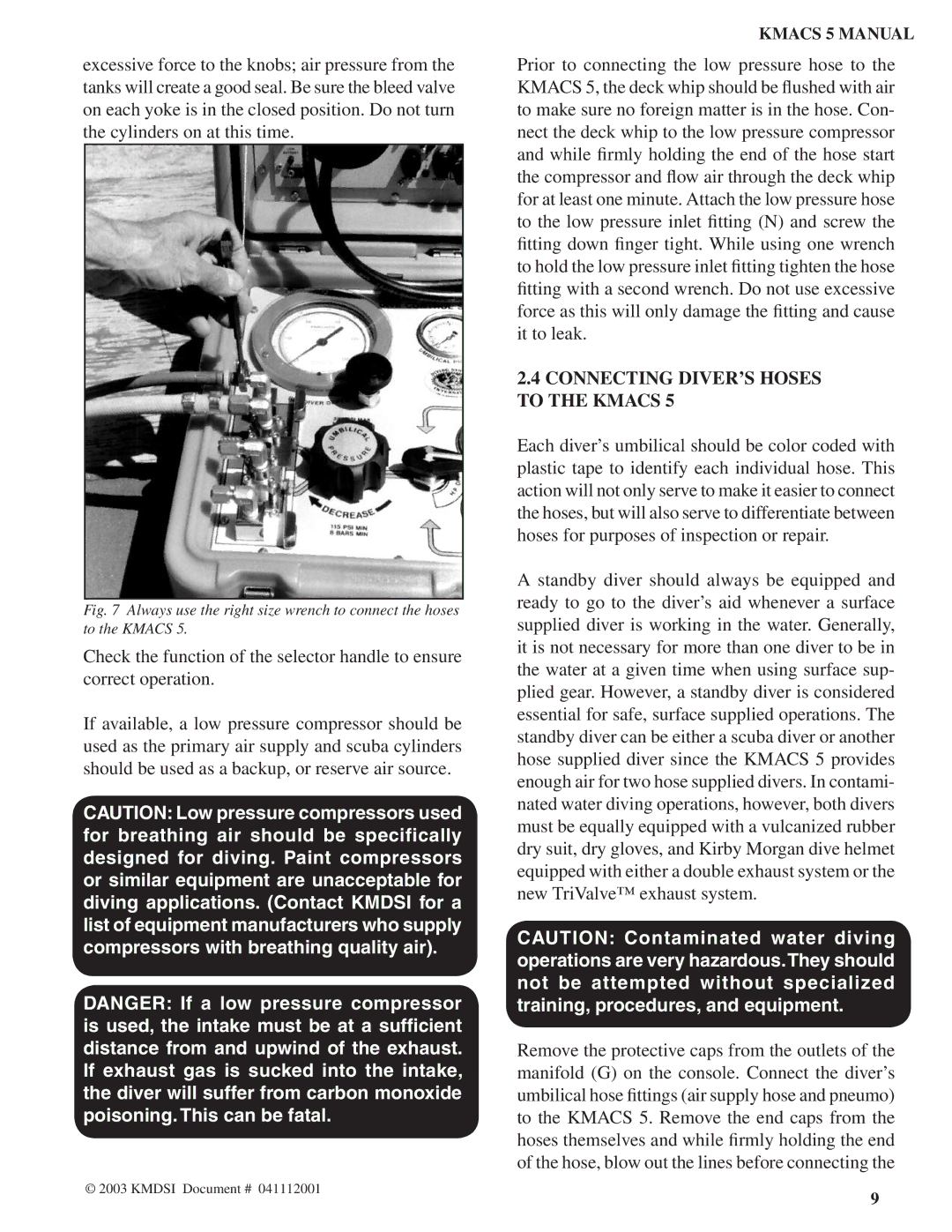
excessive force to the knobs; air pressure from the tanks will create a good seal. Be sure the bleed valve on each yoke is in the closed position. Do not turn the cylinders on at this time.
Fig. 7 Always use the right size wrench to connect the hoses to the KMACS 5.
Check the function of the selector handle to ensure correct operation.
If available, a low pressure compressor should be used as the primary air supply and scuba cylinders should be used as a backup, or reserve air source.
CAUTION: Low pressure compressors used for breathing air should be specifically designed for diving. Paint compressors or similar equipment are unacceptable for diving applications. (Contact KMDSI for a list of equipment manufacturers who supply compressors with breathing quality air).
DANGER: If a low pressure compressor is used, the intake must be at a sufficient distance from and upwind of the exhaust. If exhaust gas is sucked into the intake, the diver will suffer from carbon monoxide poisoning. This can be fatal.
© 2003 KMDSI Document # 041112001
KMACS 5 MANUAL
Prior to connecting the low pressure hose to the KMACS 5, the deck whip should be flushed with air to make sure no foreign matter is in the hose. Con- nect the deck whip to the low pressure compressor and while firmly holding the end of the hose start the compressor and flow air through the deck whip for at least one minute. Attach the low pressure hose to the low pressure inlet fitting (N) and screw the fitting down finger tight. While using one wrench to hold the low pressure inlet fitting tighten the hose fitting with a second wrench. Do not use excessive force as this will only damage the fitting and cause it to leak.
2.4CONNECTING DIVER’S HOSES TO THE KMACS 5
Each diver’s umbilical should be color coded with plastic tape to identify each individual hose. This action will not only serve to make it easier to connect the hoses, but will also serve to differentiate between hoses for purposes of inspection or repair.
A standby diver should always be equipped and ready to go to the diver’s aid whenever a surface supplied diver is working in the water. Generally, it is not necessary for more than one diver to be in the water at a given time when using surface sup- plied gear. However, a standby diver is considered essential for safe, surface supplied operations. The standby diver can be either a scuba diver or another hose supplied diver since the KMACS 5 provides enough air for two hose supplied divers. In contami- nated water diving operations, however, both divers must be equally equipped with a vulcanized rubber dry suit, dry gloves, and Kirby Morgan dive helmet equipped with either a double exhaust system or the new TriValve™ exhaust system.
CAUTION: Contaminated water diving operations are very hazardous.They should not be attempted without specialized training, procedures, and equipment.
Remove the protective caps from the outlets of the manifold (G) on the console. Connect the diver’s umbilical hose fittings (air supply hose and pneumo) to the KMACS 5. Remove the end caps from the hoses themselves and while firmly holding the end of the hose, blow out the lines before connecting the
